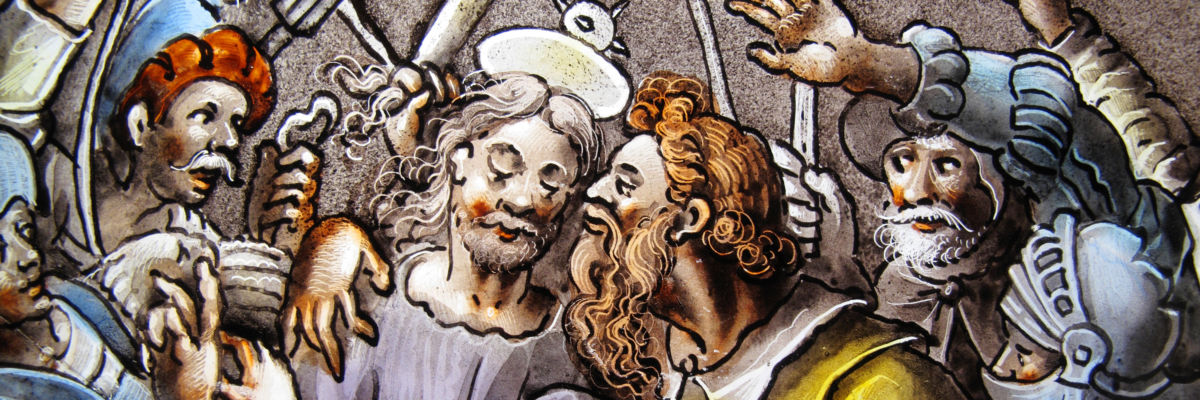
Recently, the Twitter feed of the New Yorker trotted out a piece from 2017 featuring the anti-natalist David Benatar. Anti-natalism, as the name suggests, is the view that humans should stop reproducing—that no one should ever have children again.
I think it’s worth noting that the author of the New Yorker piece is discernibly uncomfortable with Benatar’s position, and the article ends on a note of hope and optimism, all the more poignant after a few thousand words of the worst kind of pessimism from Benatar.
While Benatar’s arguments seem to fall flat — they’re not really arguments, or systematic and logical proposals, but rather a list of subjective feelings spoken with confidence and insistence on their objectivity — it is worthwhile to work our way through them. The anti-natalist movement is not new, nor is it going away anytime soon, so Catholics should be prepared to respond to it.
There are many strains of anti-natalism, each of which has its own reason why humans should stop reproducing. For David Benatar, the reason is that life is so bad, so painful, that it is not worth being alive in the first place, so, for reasons of “compassion,” we should not bring anyone else into the world.
Setting aside the question of whether it’s possible to be compassionate to someone who doesn’t exist, the Catholic philosophical tradition has something to say immediately in response to Benatar’s views: existence is infinitely better than non-existence. We hear this, probably most famously, in the so-called Ontological Argument for God’s existence, presented by St. Anselm in the eleventh century. Thus, we could never argue that it would be better not to have existed in the first place in order to avoid pain and suffering. Existence in itself is infinitely greater than non-existence, so pain and suffering are outweighed by the good of simply existing.
Benatar recognizes that good people do whatever they can to spare their children from suffering, but he argues that the only way to prevent all suffering is to prevent their existence. Because of this, he says reproduction is cruel and irresponsible.
The obvious question that arises in response is: why must all pain and suffering be prevented in order to make life worthwhile?
Benatar’s insistence on all pain and suffering being avoided is highlighted by his list of grievances. His argument is reminiscent of the theodicy question—how could a good and loving god allow suffering in the world?—but rather than looking at God’s existence, he’s looking at the value of human existence.
These conversations typically revolve around dramatic suffering like war, pestilence, famine, cancer, rampant homelessness, etc. Benatar’s complaints are decidedly more . . . pedestrian. In The Human Predicament: A Candid Guide to Life’s Biggest Questions, he writes that we’re almost always hungry or thirsty, or using the bathroom; we have to deal with “thermal discomfort” (being too hot or cold) or are tired; we itch, have allergies, wait in traffic, stand in line, fill out forms. Some of us don’t like our jobs; we age even though we want to look younger; we are disappointed in various ways. This list of inconveniences will not strike most people as sufficient reason never to have existed, nor to prevent anyone’s existence in the future.
Responding to surveys in which people assessed their overall happiness as very high, Benatar says these people are mistaken. Yes, mistaken about their own level of happiness. He says the quality of life, “contrary to what many people think,” is so poor as to justify not existing in the first place.
Here we come blatantly to the biggest issue with Benatar’s approach: he is taking his own subjective assessment of life, and the relative value of pains and joys, and trying to turn that into an objective declaration. He does not want to be some sort of ambassador for the anti-natalist movement, and he tries to be supportive when (for example) his friends have children, but nevertheless, fundamentally, he argues that any pain or inconvenience in life renders life worthless. There is no escaping that implication of his argument.
There are many more elements to his position, all of which are as confounding (and even nonsensical) as those already discussed. But in the space of this article, what we’ve presented here will suffice as a summary of his views.
One of the fundamental problems with Benatar’s approach is that there are vast swaths of the Truth that he does not acknowledge. He sees no purpose in a life with any degree of suffering whatsoever (including inconveniences like filling out forms and going to the bathroom), because this terrestrial life is all there is. The “cosmic insignificance” that he sees is the result of a strictly materialist mindset.
As Catholics, we realize that there is so much more to life than that. Even before any conversation of the redemptive value of suffering, we know that our lives have purpose. We were called into being by a loving God, who continues to keep us in existence every moment of every day through a loving act of his will. We are called to love God in this life and be with him forever in the next.
We also know that this suffering is a temporary situation. “And after you have suffered for a little while, the God of all grace, who has called you to his eternal glory in Christ, will himself restore, support, strengthen, and establish you” (1 Pet. 5:10). In other words: Sure, pain is painful, and suffering makes us suffer. But ultimately, we know that this will not last, and we can cooperate with God’s plan for us, and offer up our suffering for the sake of souls—our own and others’. We conform our sufferings to those of Jesus: “For to this you have been called, because Christ also suffered for you, leaving you an example, that you should follow in his steps” (1 Pet. 2:21).
We Catholics (and other Christians) can take comfort in what Sacred Scripture tells us about suffering, the fruits of suffering, and what we have to look forward to: “Then I saw a new heaven and a new earth. . . . He [God] will wipe every tear from their eyes. Death will be no more; mourning and crying and pain will be no more” (Rev. 21:1, 4). St. Paul discussed this a good deal as well: “We share in his sufferings in order that we may also share in his glory” (Rom. 8:17). And the ultimate reminder that Christ conquered death, and our suffering is no longer meaningless: “O death, where is thy victory? O death, where is thy sting?” (1 Cor. 15:55).
It all comes down to the idea of redemptive suffering, which the Catechism of the Catholic Church describes as follows:
Moved by so much suffering Christ not only allows himself to be touched by the sick, but he makes their miseries his own: “He took our infirmities and bore our diseases.” But he did not heal all the sick. His healings were signs of the coming of the Kingdom of God. They announced a more radical healing: the victory over sin and death through his Passover. On the cross Christ took upon himself the whole weight of evil and took away the “sin of the world,” of which illness is only a consequence. By his passion and death on the cross Christ has given a new meaning to suffering: it can henceforth configure us to him and unite us with his redemptive Passion (1505).



